How goods and services differ from one another depends on how they are classified.
- Excludable: A good is excludable if only people who pay for the good gets to enjoy the good’s benefits.
Example: Going to a concert - Non-Excludable: A good is non-excludable if you cannot prevent anyone from benefiting from the good.
Example: Public park - Rival: A good is rival if a person’s use of the good decreases the quantity available for others.
Example: A chocolate bar can only be consumed once - Non-Rival: a good is non-rival if a person’s use of the good does not decrease the quantity available for others.
Example: Watching movies on Netflix
Distinguishing Types of Goods
- Private Goods: a good that is both excludable and rival. People pay for the good, and using it decreases the quantity for others.
Example: A hot dog - Public Goods: a good that is both non-excludable and non-rival. You cannot prevent anyone from benefiting from the good and using it does not decrease the quantity for others.
Example: Police - Common Resources: a good that is non-excludable and rival. You cannot prevent anyone from using the good and using the good decreases the quantity for others.
Example: Ocean fish - Natural Monopoly Goods: a good that is excludable and non-rival. People pay for the good and using it does not decrease the quantity for others.
Example: Cell phone, Internet
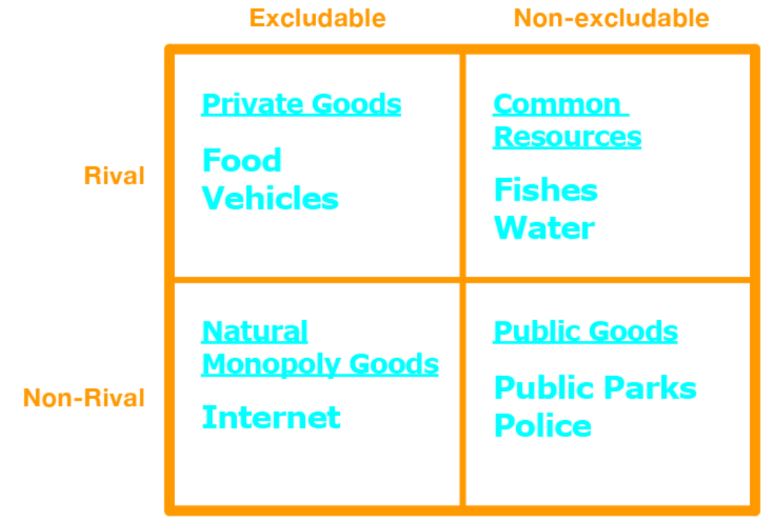
The Free-Rider Problem
Marginal Social Benefit of a Public Good: Is the sum of every individual’s marginal social benefit of all individuals.
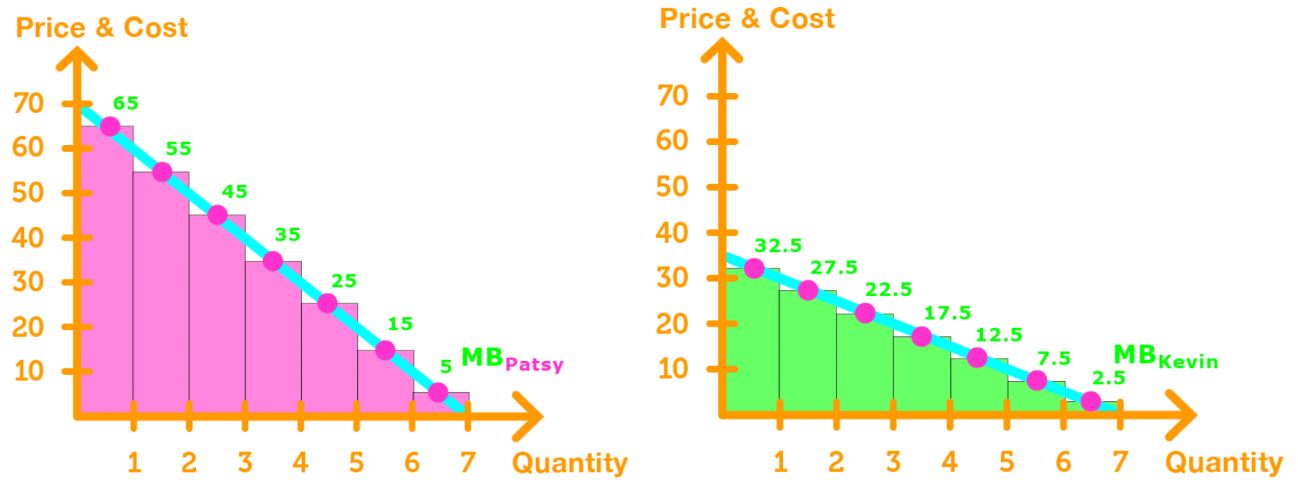
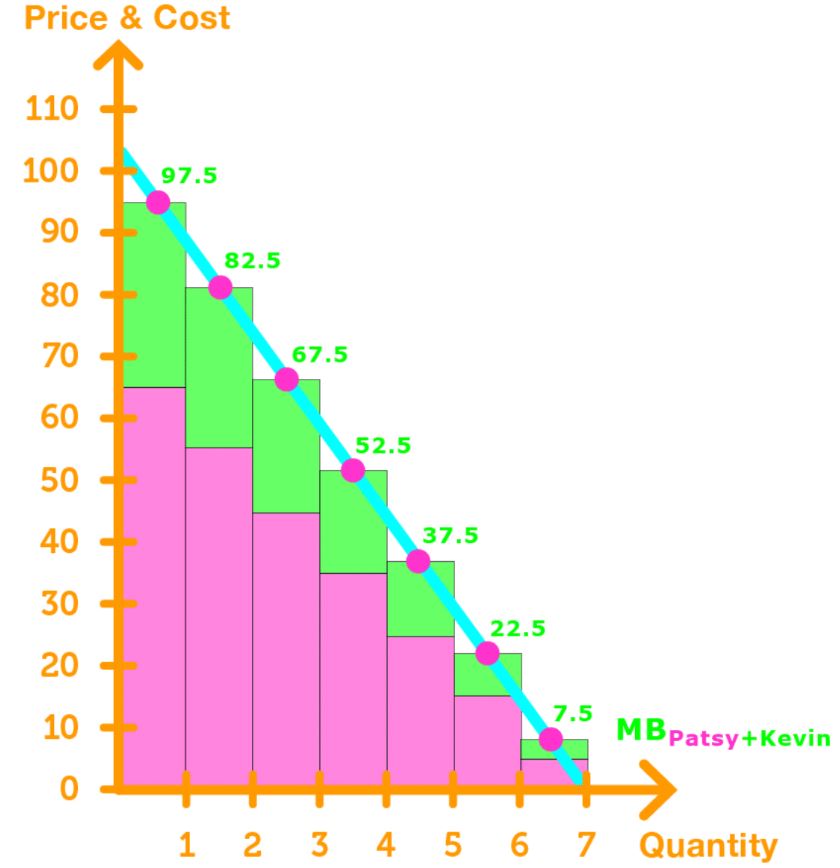
Note: This curve behaves the same as the MSB of a private good.
A “free rider” is a person that enjoys the benefits of a good without having to pay for it. Since non-excludable goods benefits everyone (including people who don’t pay), everyone has an incentive to free ride.
Public goods have a free-rider problem. Since very little people want to pay for the good, quantities become less, causing the inequality MSB > MSC.
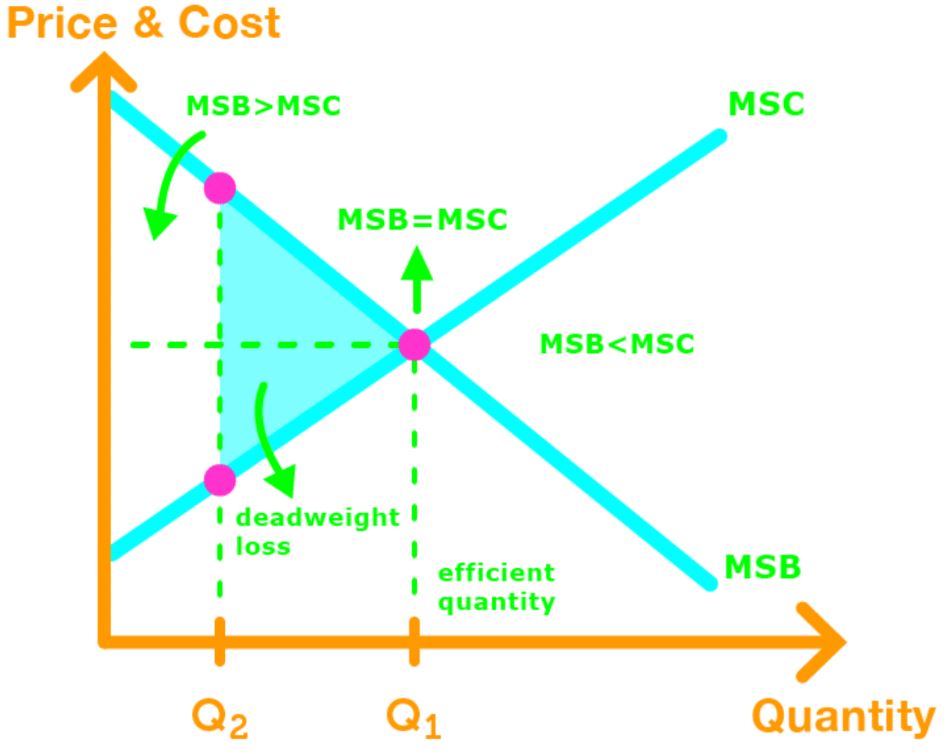
This leads to an inefficient quantity of the public good, which creates a deadweight loss
Note: Efficient quantity of a public good is only achieved if MSB = MSC.
Solving the Free Riders Problem: If firms try to sell public goods, then no one will buy it because there is no incentive to. However, the government can tax all the consumers of the public good, which forces everyone to pay for its provision.
Tragedy of the Commons
Tragedy of the commons happens when there is no incentive to prevent the overuse of common resources.
Most common resources are renewable and can rejuvenate themselves. However, common resources can be used sustainably, or unsustainably.
- If it is used sustainably, then the rate of use is rate of growth. This means the total stock of the common resource grows or remains constant.
- If it is used unsustainably, then the rate of use > rate of growth. This means the total stock of the common resources decreases.
In the graph, we see that
- In the beginning, as the stock of fishes increases, the sustainable catch increases.
- After the maximum sustainable catch, as the stock of fishes increase, the sustainable catch decreases. This is because fishes must compete for food, so some die and there are less fishes to catch.
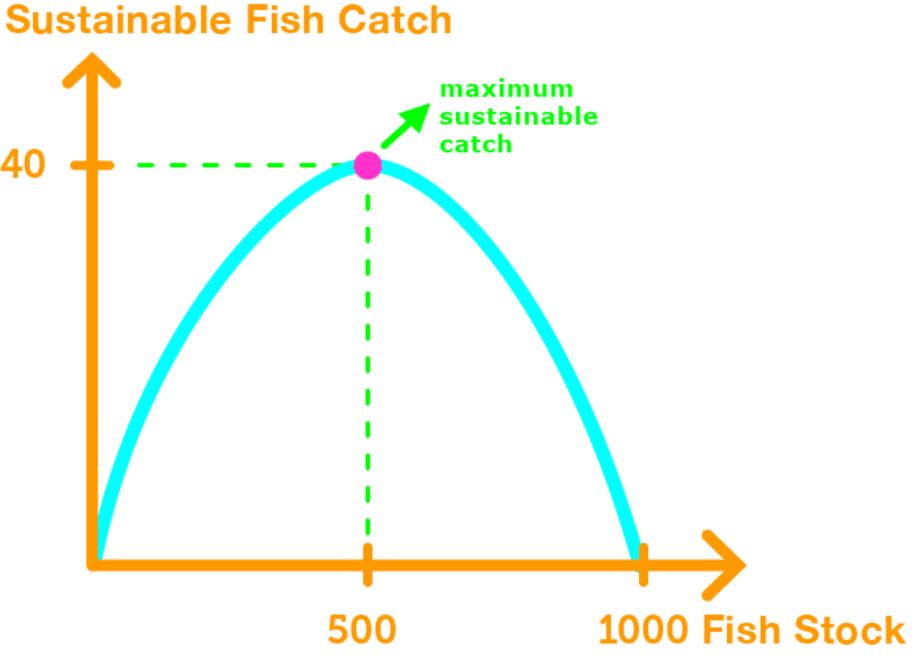
In the graph, we see that
- If we fish on or under the sustainable catch curve, then it is sustainable.
- If we fish above the sustainable catch curve, then it is unsustainable

Why do firms overfish? This is because they do not realize the external costs that come with fishing.
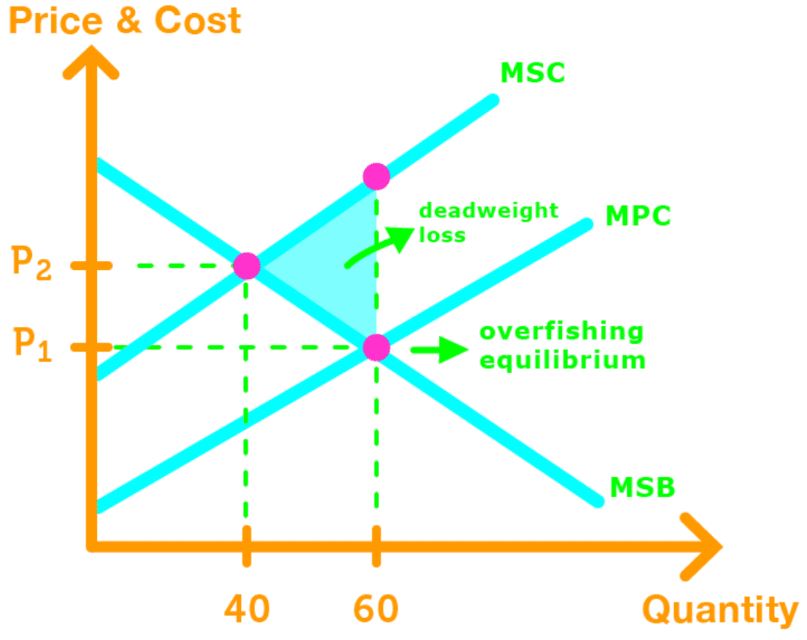
We know that the social optimal output is when MSB = MSC, which is at the maximum sustainable catch.
The firm’s supply curve is MPC, and the demand curve is MSB. So the market equilibrium is the intersection of the two and the quantity is past the maximum sustainable catch. This is inefficient, so we get deadweight loss from overfishing.






